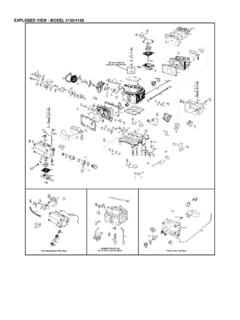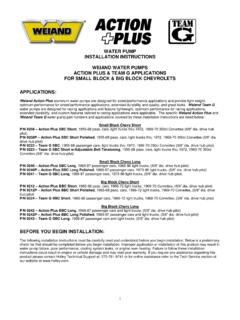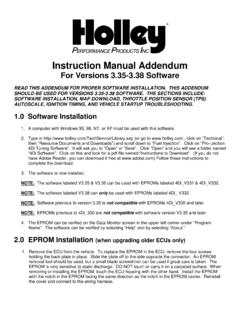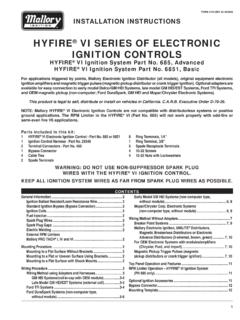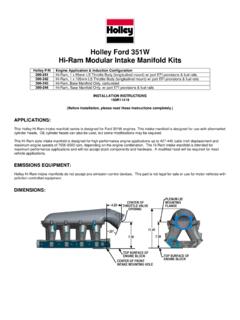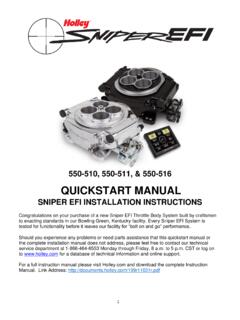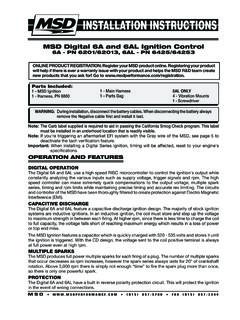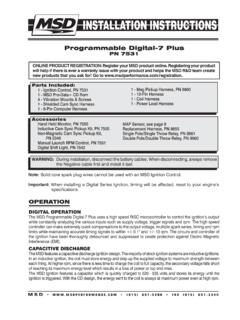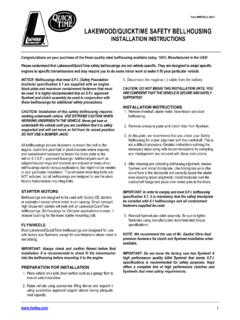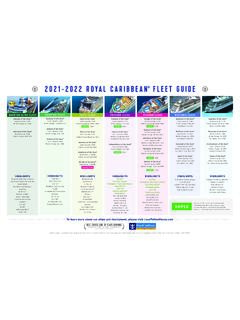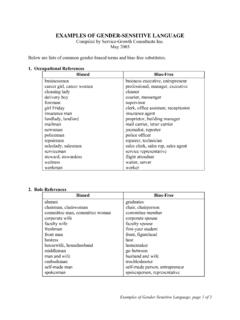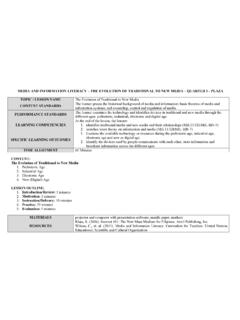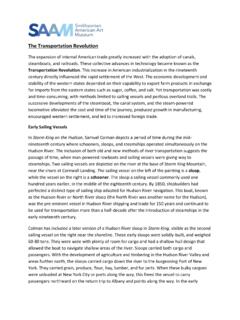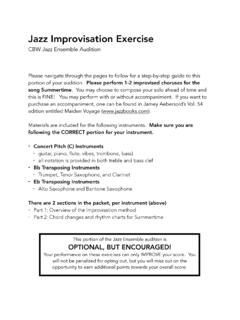Transcription of BOOST CONTROL INSTRUCTIONS - Holley
1 1 BOOST CONTROL INSTRUCTIONS TABLE OF CONTENTS The Essentials (READ THIS) .. 2 Overview .. 2 Wastegate Types .. 3 CONTROL Methods .. 3 Solenoid and Sensor Selection .. 3 TURBO & WASTEGATE CONTROL PRIMER (OPTIONAL BACKGROUND MATERIAL) .. 4 Main Controller Setup Common to All Configurations .. 6 BOOST Safety System .. 8 Single Port Wastegate CONTROL .. 10 Application of a single port wastegate with an Open Loop-Duty Cycle CONTROL Method .. 11 Application of a single port wastegate with a MAP Pressure CONTROL Method .. 12 Dual Port Wastegate CONTROL .. 16 Application of a dual port wastegate with an Open Loop- Duty Cycle CONTROL Method .. 17 Application of a dual port wastegate with a Dome Pressure Only CONTROL Method.
2 18 Dual Solenoid Setup .. 19 Single Solenoid Setup .. 20 Source Pressure Setup .. 21 Dome Pressure Setup .. 21 Tuning Notes .. 22 Custom Solenoid Use .. 22 Application of a dual port wastegate with a MAP and Dome Pressure CONTROL Method .. 25 Base Dome Pressure Table .. 26 Base Dome Pressure Table PID CONTROL .. 30 Target Curves .. 32 BOOST vs. Speed .. 32 BOOST vs. Time .. 33 2 BOOST vs. Gear .. 34 BOOST vs. RPM .. 36 BOOST Manual .. 37 BOOST Builder .. 38 Variables for the BOOST CONTROL 39 Normal Variables .. 39 Internal Variables .. 40 Appendix .. 44 Layout of a Typical Dual Port Wastegate, Twin Solenoid System .. 44 PID Controller Tuning Information .. 45 Concepts.
3 45 Trying it out .. 46 What to look for .. 48 An example of the effects of the P Term .. 51 An example of the effect of the Target Rate Limiter .. 60 Solenoid Dead Time .. 63 Holley Components .. 67 THE ESSENTIALS (READ THIS) OVERVIEW The BOOST CONTROL functionality in the Holley ECU gives you the ability to tweak the BOOST level of your engine/turbo system electronically within a certain range. It does not have absolute authority over BOOST : it operates on top of a core mechanical CONTROL system. All of the system configurations on which the Holley system will work can function without the Holley system being present. The best time to use the Holley BOOST CONTROL functionality is after you have a mechanical system that is proven and stable.
4 Once things are working on the spring then it is relatively easy to add on the electronic controls to be able to CONTROL your BOOST to a higher level. The Holley CONTROL system is designed to be somewhat flexible to allow you to pick the kind of strategy that works the best for your application. Different systems need different things. Instead of offering a one-size-fits-all compromise, we give you several options. This means that you have to either know what you are doing or know where to start learning. This is not a self-configuring system. If you know everything about turbos- great. You still need to understand how the Holley CONTROL system works in combination with the systems with which you are familiar. If you are starting from zero- that is fine too.
5 Try to gather as much information as you can from different sources, start out slow, and learn as you go. It is doable. This document, unfortunately, is not going to give you everything you need to know about turbochargers and engines. Either way, before you start controlling BOOST you really need to understand how the system works as a whole and what dictates the BOOST . If you find yourself shooting in the dark, stop and think. If you already have a working system and you want to figure out how to make the Holley system work with it, you can skip to the section that is appropriate for your hardware. 3 If you do not have a working system or you are looking for guidance to build a system from the ground up, it would be good to read the information for the different types of systems to understand what would be best for you.
6 Decide what you want, build everything up, verify that it works without using Holley BOOST CONTROL , and then add on the Holley BOOST CONTROL system. WASTEGATE TYPES Practically speaking, there are a number of major forks in the road in regard to system configuration and setup. The most significant fork in the road is the wastegate type- single port wastegate or dual port wastegate. If you want the most flexibility, use an external dual port because they can also be plumbed as if they are a single port wastegate if so desired. There are also some dual port can style actuators that can be used with internal wastegates on some turbochargers. Single port wastegates are pneumatically the simplest, use one solenoid, do not need extra pressure sensors, and are often integral to the turbine housing.
7 Unfortunately tuning is usually more difficult because of the non-linearity between duty cycle and BOOST . They usually have reduced CONTROL authority compared to a dual port wastegate. Dual port wastegates are easier to tune because of reasonable linearity between CONTROL pressure and BOOST pressure, have better CONTROL authority than the single port style (especially if used with an external pressure source), have more options for the CONTROL method, and have more options in the mechanical CONTROL components (springs, shims, adjustments, etc). Unfortunately they usually cost more, they are obviously more difficult to plumb than an internal single port wastegate, and they need another pressure sensor (and ECU input). CONTROL METHODS After you know what kind of wastegate you are going to use you have to figure out what you are actually going to CONTROL .
8 For a single port wastegate you have two options- running open loop (using no feedback in the CONTROL ) or controlling manifold BOOST pressure. The latter is more appropriate for the vast majority of applications. For a dual port wastegate you have three options- running open loop (using no feedback in the CONTROL ), just controlling the dome pressure, or controlling the manifold BOOST pressure in conjunction with the dome pressure. We recommend starting out doing dome pressure CONTROL . You only run completely open loop if you must, and the complexity of simultaneous manifold pressure and dome pressure CONTROL is best done after successful application of dome pressure CONTROL by itself. SOLENOID AND SENSOR SELECTION After you figure out what you are going to CONTROL you have to figure out what solenoids you are going to use to CONTROL it and what sensors you might need.
9 For most people running single port wastegates we recommend using the single Holley solenoid 3-port setup, which does not require an extra pressure sensor. For most people running dual port wastegates we recommend using the dual Holley solenoid setup with a sensor dedicated to measuring dome pressure. We also recommend using PWM- outputs to drive the solenoids. If you d rather use a PWM+ output, use the ones on the J2B connector. The other PWM+ outputs (the only ones on an HP) have a different drive type that extends the solenoid deactivation time. You can use just about any pressure sensor that can be configured in the IO function as long as it has the appropriate range. These are blanket recommendations and there are legitimate reasons to do otherwise, but make sure you read through the appropriate sections later in this document to understand why you would need to deviate from this advice.
10 4 This is a plug for our Holley solenoids. We made the system flexible enough to support a wide variety of solenoids and topologies, but the golden rule is this: if you do not want to dig into the nuts and bolts of how the system works and assume the risk of getting it wrong- just buy our solenoids. We do not manufacture them, they are built to our specifications by MAC. Not all solenoids are created equal. No matter what the internet says, solenoids that look identical can have drastically different dynamic performance because of the build options that are available. Think about how many fuel injectors look exactly the same but have wildly different response characteristics. There is nothing magical about the solenoids we use, but we have done the work for you to characterize the solenoids dynamic response and build in the appropriate compensations in the software.
